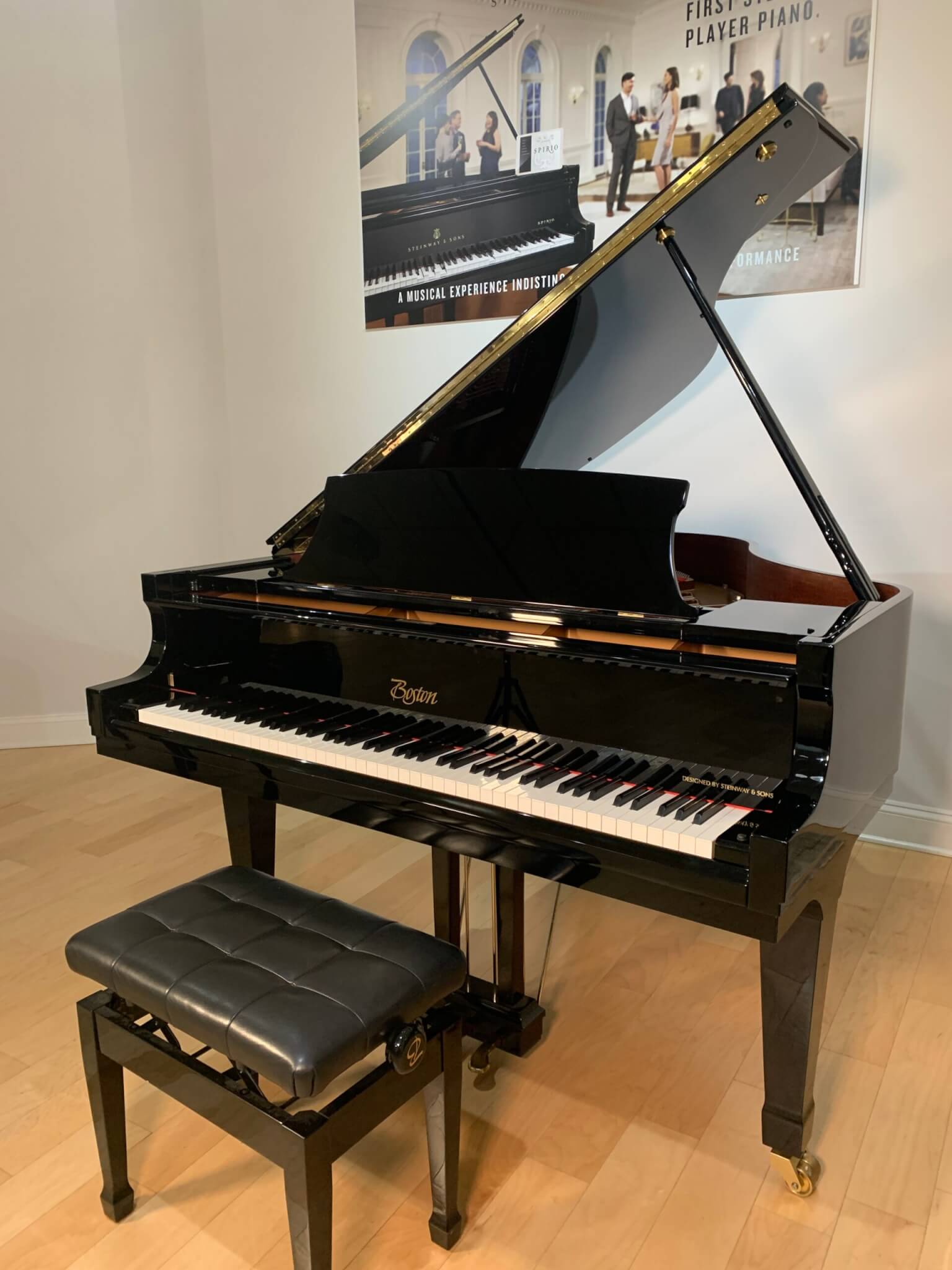
BOSTON PIANO SERIAL NUMBER SERIAL NUMBER
Its location varies depending on the type of instrument.įor Kawai grand pianos, the serial number is found on the iron plate under the music desk on the right side of the piano (near the tuning pins). The serial number identifies the year an instrument was manufactured and is the key to all future warranty service and repair (if needed). The first step is to find the serial number of your instrument. There is one mystery left to this piano that Hansford says he’d love to know.This page will help you determine the age of your older Kawai acoustic piano. Of the piano’s current value, Hansford could only stutter an incredulous “Who knew?” We estimate replacement value of this particular instrument to be approximately $90,000-$100,000 in today’s market with value appreciating over time. This piano is likely the only one of its kind in the world today. The original ivory keys were preserved in restoration.
BOSTON PIANO SERIAL NUMBER FULL
The piano has been restored and refinished to like-new condition, inside and out, and the restoration was done with a full historical perspective in mind. Very few of these “Cocked Hat’’ pianos were ever built, and they are exceedingly rare today. The instrument is a “Cocked Hat” style piano, a short-lived 19th Century hybrid of the square piano and the grand piano. The instrument is made of Brazilian Rosewood and is of the Rococo Victorian style. Our archives state that George Guild began building pianos in Boston in 1861, so this extremely low and early serial number would place your piano at circa 1861, making it the earliest and most historically important instrument by Guild we know of to survive. This is to certify authenticity of this Vintage George Guild “Cocked Hat” Style Grand Piano, Serial #10. In an appraisal and authentication letter to Hansford, Stinnett wrote: Stinnett and his team spent 18 months disassembling the piano and reconditioning or rebuilding every element. But it was in rough shape and needed a lot of work.”Īnd so he gave it a lot of work. The thing that made these pianos so rare is they were hybrids of two different styles - traditional grands and squares. “I was blown away, simply amazed,” Stinnett says.

The first thing Stinnett did after agreeing to work with Hansford was travel to St. And every expert he encountered pointed him to Stinnett, proprietor of the Antique Piano Shop in Friendsville, Tenn. Hansford, retired from ballet for several years and living in Harlem, began to research reputable piano restorers and appraisers. But it was only a couple years ago that I finally decided to have it looked at and find out what this piano’s story was.” “And I’ve said that ever since - the entire 42 years.

“I wanted to do something special with it,” he said. I’d had a small electrical organ as a child, but that was it.”ĭetails of the restored piano. It was beautiful and I had to have it, never mind that I didn’t play piano. “I saw they were into collecting pianos too, mostly player pianos,” Hansford says of his fellow record-collector. That’s where he stumbled upon this piano.

Louis record collector to purchase music. That summer of ’71, Hansford, then a 17-year-old high school senior who had recently begun collecting vinyl records, had gone to the home of another St. “I don’t know much about the piano’s life before it came into my life, but I know that this location is a good, almost spiritual home for it.” “I figured it was poetic justice to have it relocated to Harlem, the home of one of the greatest musical periods in our country’s history, and to the block named for one of the most creative and important artistic minds of a generation,” Hansford says. Louis and stored it at his mother’s house there, has had it restored and is having it shipped to his home on Langston Hughes Place in Harlem. That man, Ron Hansford, a retired ballet dancer and instructor who bought this piano in 1971 in his hometown of St.


 0 kommentar(er)
0 kommentar(er)
